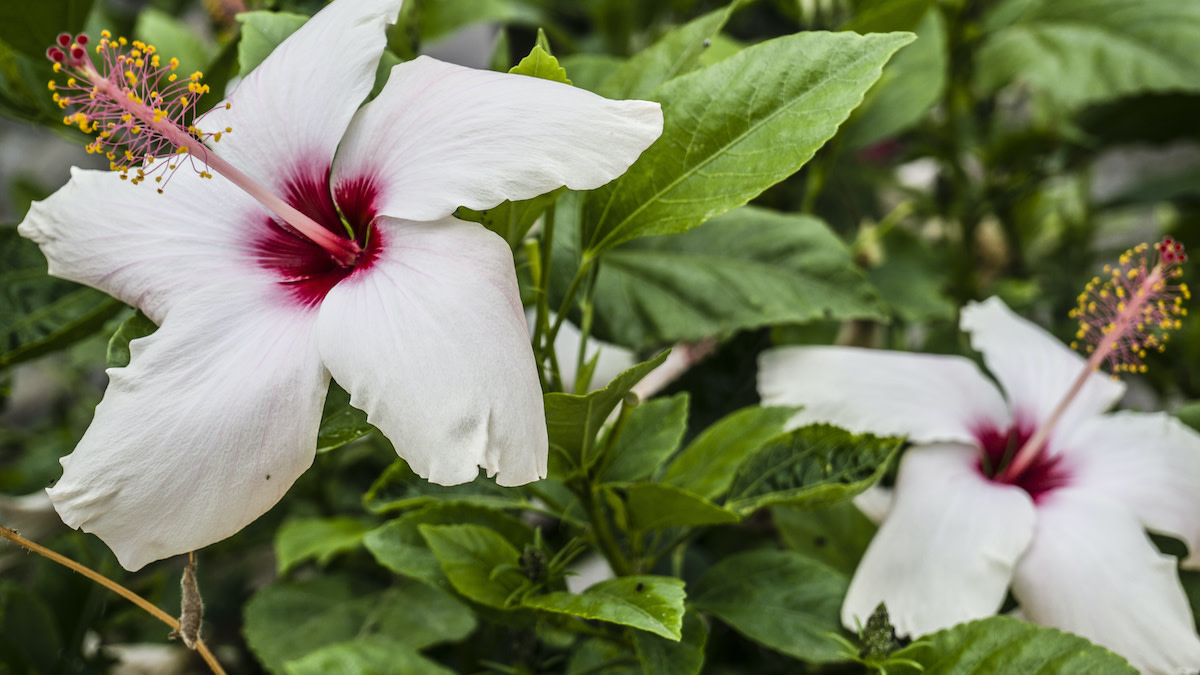How to Grow Hibiscus From a Seed
Written by MasterClass
Last updated: Jun 7, 2021 • 4 min read
Hibiscus flowers are perennial plants that come in a variety of sizes, shapes, and colors. With so many options to choose from, hardy hibiscus plants make great additions to any garden bed, yard, or as a decorative houseplant.
Learn From the Best
3 Hibiscus Varieties
While there are over 200 hibiscus species, here are the three main varieties:
- 1. Hardy hibiscus: Hardy hibiscus (Hibiscus moscheutos), also known as swamp rose mallow, is a cold-hardy, wetland plant that is found naturally in swamps, marshes, or the moist areas around rivers and ponds. Their flower blossoms can be as small as four inches and grow to be wider than 10 inches, with the entire plant growing between two and 10 feet tall.
- 2. Rose of Sharon: (Hibiscus syriacus) With smaller leaves and flowers blooming around two to four inches across, this flowering shrub (or small tree) can still grow up to eight feet tall and can survive below-freezing temperatures. This perennial hibiscus does best with a blend of full sun and partial shade, and acidic, well-draining soil.
- 3. Tropical hibiscus: (Hibiscus rosa-sinensis). Also known as Chinese hibiscus, this tropical plant grows best in warm climates. The tropical hibiscus blooms between summer and fall, and needs plenty of daily waterings if the climate is hot and dry enough. This hibiscus can grow up to 15 feet tall, and sprout flowers three to 10 inches in diameter.
How to Grow Hibiscus From a Seed
Growing hibiscus from seed takes a bit of work, but the results are beautiful, floral additions that can brighten any home or garden. To plant hibiscus from a seed:
- 1. Germinate indoors. Hibiscus seeds can take a long time to germinate depending on your plant hardiness zone, so you’ll need to jump-start the process indoors (around two to three months before the last frost date). Germinate the seeds by using a knife to nick the round end of the hard seed coating, which will allow more moisture to enter and speed up the germination process. Soak the seeds in room temperature water anywhere from one to eight hours.
- 2. Plant in a tray or pot. Choose a potting soil or seed-starting mix for your germinating seeds. Plant seeds about a quarter-inch deep in your potting mix, and keep in warm, sunny conditions—at least 75 to 85 degrees Fahrenheit. After two to three weeks, your hibiscus seedlings should sprout. As your hibiscus plants grow indoors, you’ll need to place them into bigger pots to accommodate their increasing size. Hibiscus have extremely fragile stems before they become fully established plants, so avoid planting outdoors until they are strong enough to survive adverse weather.
- 3. Harden off. Once your hibiscus seedlings have grown a few true leaves and the danger of frost has passed, you can start to harden off your plants by taking them outside to acclimate for a few hours a day.
- 4. Transplant and water. Dig a hole in your garden soil large enough to accommodate the hibiscus root ball and loosen the soil up to one foot deep. Set the plant inside of the hole so that the top of the root ball is level with the soil surface. Begin filling the hole with soil then stop at the halfway point. Soak the soil thoroughly then continue filling the hole with soil. Do not place any soil on top of the root ball to avoid suffocating the plant. Deeply water the planting area.
How to Care for Hibiscus
Some types of hibiscus can withstand cool temperatures, while others thrive in warm weather. The type of hibiscus you’re growing can alter the specific kind of plant care, so take note of which variety you have in your garden so that you can provide the proper care.
- Mulch: Mulching around the base of your plant after it begins to grow can help keep the soil moist and prevent soil erosion, which can interrupt the growth of your plant. While hibiscus flowers should receive a weekly watering, mulching can help retain soil moisture.
- Water: Hibiscus plants don’t require daily watering but you will need to water the soil as needed on a weekly basis to keep it moist throughout the growing season.
- Deadhead: Removing old flower blossoms before they form seed heads can encourage reblooming. When you remove the old heads, the plant redirects its energy to make new blooms rather than producing seeds.
- Prune: When pruning hibiscus, only cut the plant a third of the way back, leaving two to three nodes where regrowth will happen. Hibiscus flowers are prone to aphids, whiteflies, spider mites, and Japanese beetles, but pruning regularly can improve air circulation and sunlight to the plant, reducing the safe habitat for critters and foliage-killing disease. Companion plant hibiscus with other ornamental grasses that attract beneficial insects like ladybugs or assassin bugs to help naturally manage pest infestations.
- Fertilize: While some hibiscus plants are hardy enough to survive poor growing conditions, keeping your plant healthy will increase the chances it will grow back again the next year. Hibiscus enjoy a fertilizer that is medium-to-high in nitrogen, lower in phosphate, and high in potassium. You can fertilize hibiscus as frequently as once a month.
- Protect: After transplanting, protect hibiscus seedlings from strong winds. Their stems will be fragile until they become established plants, so it’s best to protect them from adverse conditions until they can survive on their own.
Learn More
Grow your own food with Ron Finley, the self-described "Gangster Gardener." Get the MasterClass Annual Membership and learn how to cultivate fresh herbs and vegetables, keep your house plants alive, and use compost to make your community - and the world - a better place.
